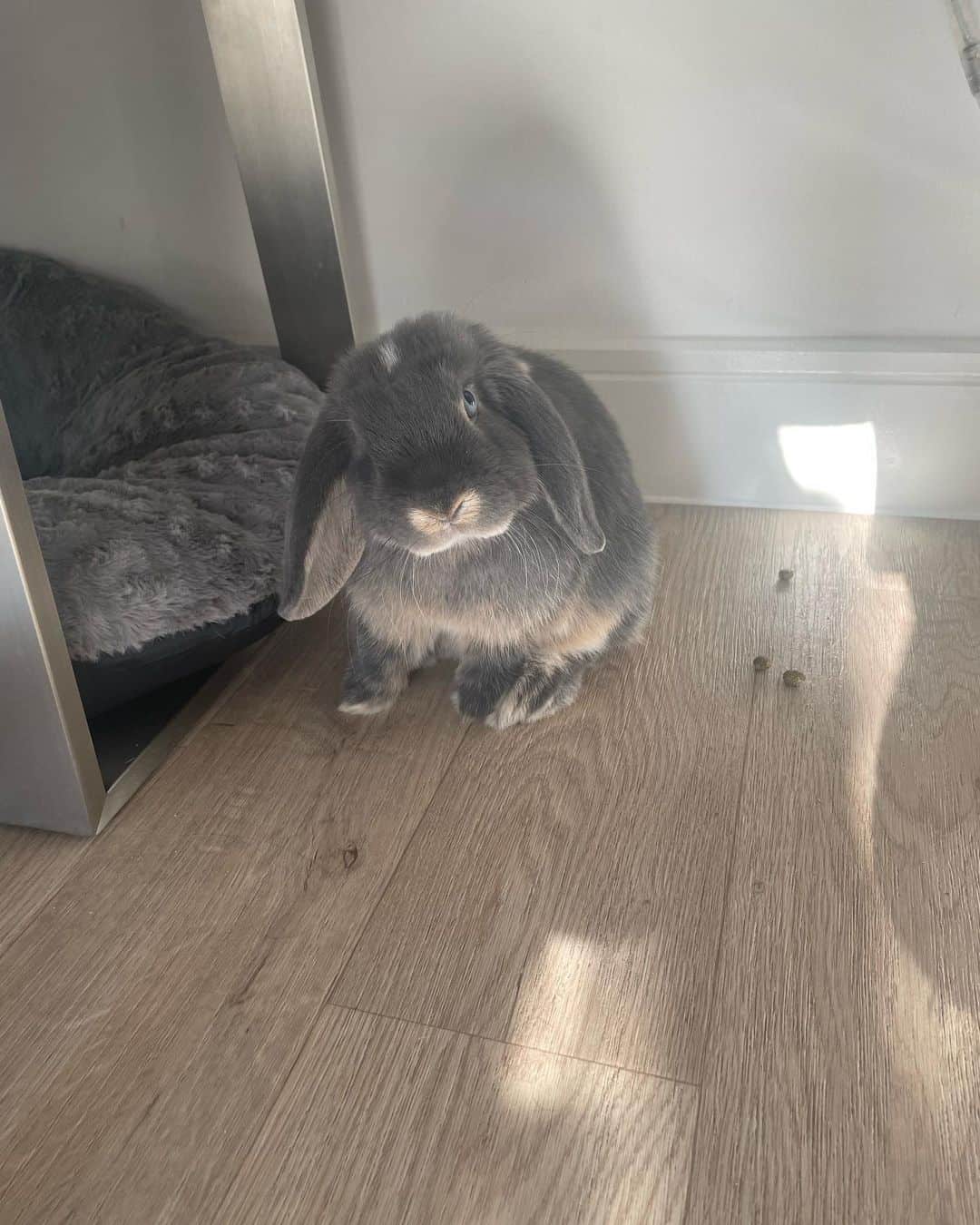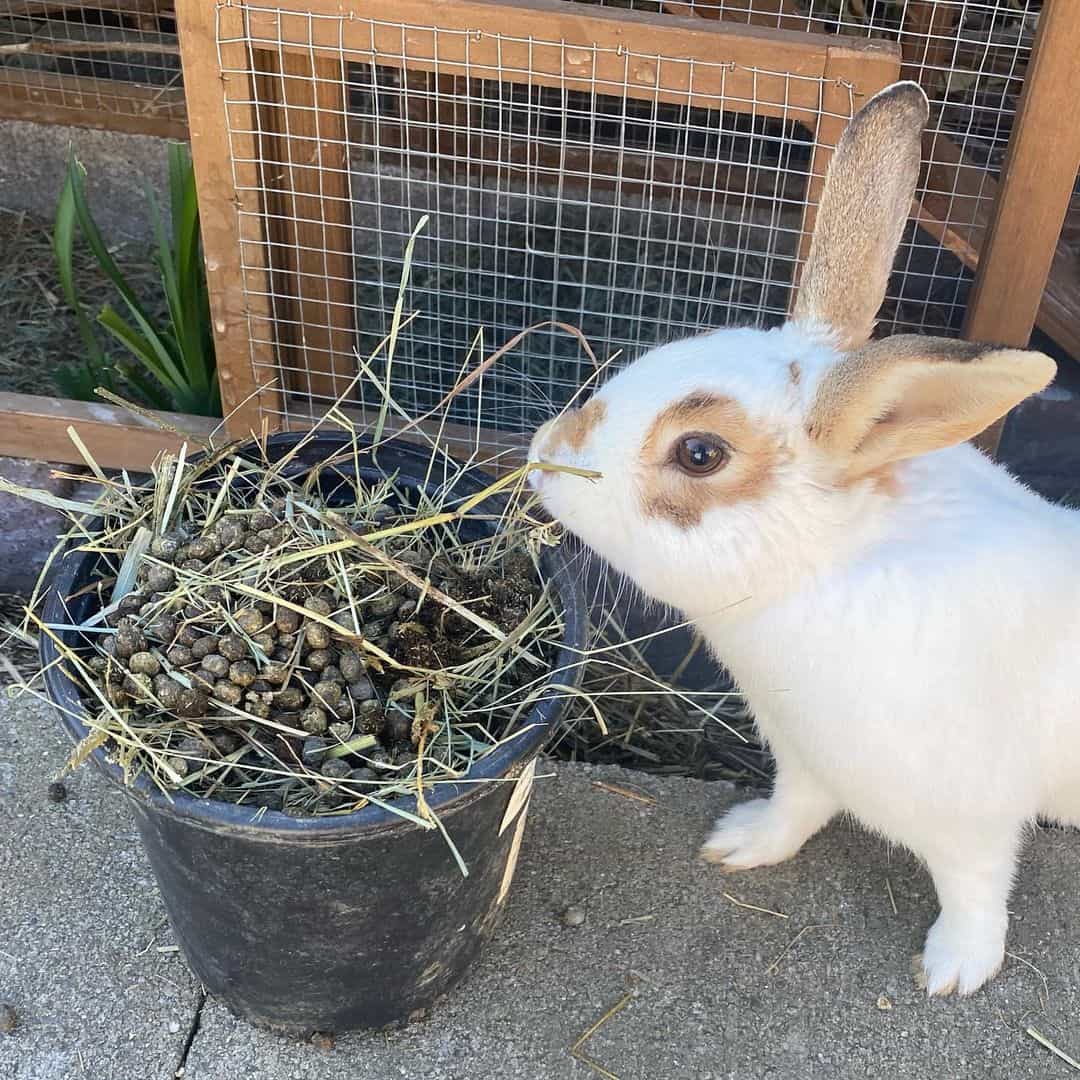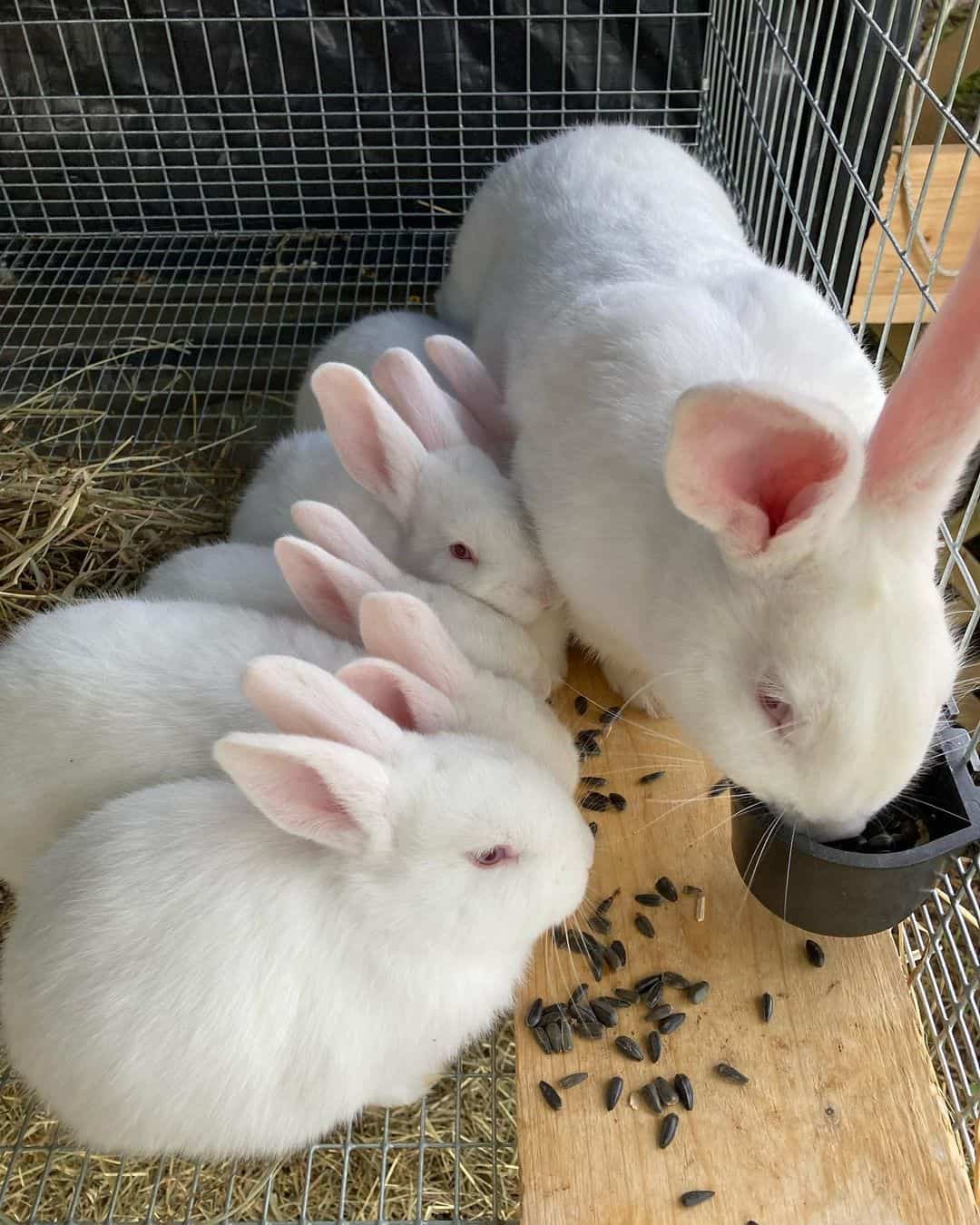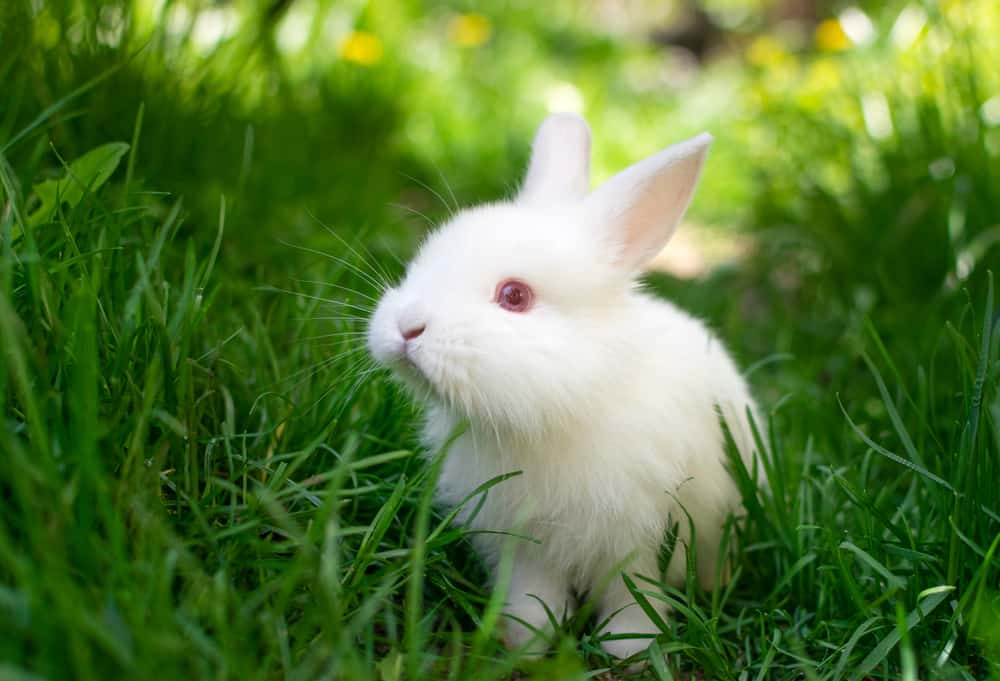Rabbits are cute furry creatures, so if you’re an animal lover, wanting one as a pet isn’t a surprise. However, there are lots of things you need to know about them, including rabbit poop. Yes, you read that right, but what does rabbit poop look like anyway?
Knowing what rabbit poop looks like is crucial to determine if they’re as healthy as it should be. Here we’ll give you all the facts you need and what you should be looking for. Let’s get started by getting right to the main question of what rabbit poop looks like!
What Does Rabbit Poop Look Like?
Rabbits poop a lot, and if you’re a new rabbit parent, that’s the first thing you’ll discover about them. Fortunately, these aren’t all disgusting since their feces are like dried-up and odorless cocoa puffs.
If your rabbit is trained to use the litter box, these are simple and easier to clean. And in all honesty, their poop is probably the least disgusting you’ll ever have to clean up when compared to other animals.
Typical rabbit poop, which is also called fecal pellets, also varies in size. Its exact shape and color may differ slightly depending on your rabbit.
But remember, the size of your rabbit and their poop don’t necessarily correlate. Rabbit poop from big 10-pound bunnies can sometimes be smaller than those pellets produced by very small rabbits. This is why it’s critical to know your bunny’s poop, so you’re clear about what’s normal and what’s not.
The Appearance of Healthy Rabbit Poop
Here’s what you need to know about regular and healthy rabbit poop:
1. The Color
These normally should have medium green, dark brown/green, or almost black shade. But sometimes, these can be more wheat-colored or tan.
You shouldn’t be worried if their poop’s color seems a bit light as long as they’re consistently colored. If their poop is particularly dark, it could mean their diet contains too much protein. But most of the time, it all boils down to how your rabbit digests their food.

2. Shape and Size
The usual size of healthy rabbit poop ranges from the size of a green pea to the size of a chickpea, which is about 7mm to 12mm. These should all be uniform in size, so if there’s a drastic difference in the size, that’s a cause for concern. You will need to immediately make an appointment with your rabbit’s vet.
Speaking of its shape, rabbit poop needs to have a consistent shape, little round balls. It’s possible to see some distortions in shape, especially when it’s shedding seasons. This is the time when extra fur is packed into their pellets. However, if it occurs frequently, it could be a sign of a bigger digestion issue.
3. Consistency and Texture
Rabbit poop should be hard and shouldn’t be squishy. However, they also shouldn’t be too hard. A pellet should easily flatten between your forefinger and thumb with a bit of pressure. They should break and crumble open if pressure is applied with your fingers, or if you accidentally step on one.
Its interior should look like digested hay and somewhat similar to sawdust. The poop shouldn’t be soft or show any other common animal poop characteristics.
4. Smell and Amount
Rabbit poop doesn’t stink, nor does it have a strong scent. If you notice any strong smell coming from their litter box, it is likely because of the urine, not the poop. It may sound surprising, but normally, rabbits can make 200 to 300 poop pellets a day, and that’s a lot of cocoa puffs!
But generally, you should be aware of what’s “normal” for your rabbit’s poop. It’s a way to keep track of and monitor your pet’s health. However, consistency is the most important thing to look out for when observing your rabbit’s poop.
Again, it’s fine if some of their poop is the size of a sweet pea, while others are like chickpeas. You also don’t have to get too concerned as long as these are consistently about the same color and size.

The Cecotropes
Another kind of normal rabbit poop is the cecotropes which are small clusters of soft, nutrient-packed pellets. These are produced in your bunny’s cecum, where natural fungi and bacteria live. Interestingly, these turn the indigestible parts of your pet’s diet into important dietary elements.
Yes, you got that right. Rabbits need to eat their own poop to get all the necessary nutrients their body needs.
Usually, rabbits eat their cecotropes directly from their anus, so you won’t see many of these around. However, there are times you’ll spot the cecotropes, especially when your bunnies missed them.
If you start seeing lots of these, it’s best to check your rabbit’s diet. They tend to overproduce cecotropes when there’s too much sugar in their meals.
People used to believe that rabbits only produce cecotropes in the evenings. However, it turns out that the production of these cecotropes depends largely on the rabbit. There are some who produce more cecotropes at night, while there are others who do in the day.
Can Poop Show if Your Rabbit is Sick?
It’s vital to monitor your rabbit’s poop regularly. Why? Because a change in size, amount, or shape can say a lot about their health.
They have sensitive digestion, so a change in their health can be detected in their poop. Since you clean their litter box daily, it’s best to keep an eye on their poop to ensure they look normal and healthy.
If their poop suddenly looks different, observe and contact your rabbit’s vet immediately. Here’s a list of poop types that show something’s wrong.
Mucus-covered Rabbit Poop – If your rabbit poop has mucus, it’s likely a sign your bunny’s dealing with a parasitic condition. This can also happen if they have just been antibiotic-treated.
Diarrhea – This is a rare case for rabbits, so it’s a cause for alarm, and your bunny should be taken to the vet immediately. When doing so, take some of your bunny’s droppings so the vet can take samples to determine the issue.
Diarrhea in rabbits is usually caused by potent microbes and toxins. It can also happen with little bunnies who ate solid food before they were ready for it,
Large Egg-shaped Poop – Don’t confuse these poop types with double/triple poop or normal large poop. Big egg-shaped rabbit poop can happen due to megacolon, a rare occurrence usually related to genetics. It can also occur due to trauma.
The condition is uncommon, but if you think your rabbit has it, it’s best to contact a specialist for necessary long-term care.
Small Round Poop – We mentioned earlier that rabbit poop is small and round, but if they’re smaller than usual, there are numerous reasons for it. Stress is the most common cause of small round poop.
Strange noises or stressful experiences can cause your pet’s poop to get temporarily small, but it should return to normal in a few hours. If their poop is chronically small, it indicates chronic pain, partial blockage, or narrowing of the intestine. When you see these types of rabbit poop, a visit to their vet is necessary.
Other Things to Look Out For:
- Deformed and unusually shaped poop
- Too many cecotropes
- Mushy poop
- No poop at all. If this is happening to your bunny, it’s an emergency, and you’ll need to rush them to the vet.

Ways to Clean Up Rabbit Poop
Since rabbits are sensitive to chemicals, cleaning their litter box can be tricky. Fortunately, plain soap (not the antibacterial types), vinegar, bleach (diluted in a 1:10 ratio in water), and sunlight are the best ways to eradicate germs. These also help remove most of the dirt, stains, and pathogens that could affect your rabbit and your family.
Healthy Food for Your Rabbit
The main and most important part of your rabbit’s diet is timothy hay. The second most important part of their diet is to get one to three cups of fresh green leafy veggies daily. However, this amount depends on the size of your bunny.
They also need ¼-½ cups of fortified, top-quality pellets. You can give them treats like berries, carrots, bananas, etc. However, you should only give these to your rabbits in small amounts.
Remember, your furry little friend has a sensitive digestive system, and digestive illnesses/issues are common in rabbits. These can be fatal if the problems aren’t dealt with immediately.
Since that’s the case, you always need to be careful about the food you give your bunnies. Doing so will allow them to grow and live healthy, happy life.
Fiber is Essential
As we mentioned earlier, fiber is essential, and hay is very high in it. And because of the bunnies’ foraging ancestors, their lengthy digestive tract is designed to break down and handle fibrous vegetation.
Hay’s long fibrous strands work efficiently compared to ground-up fiber found in commercial bunny pellets. Giving them the right amounts of fiber will keep their gut moving how it should.
One of the most common, as well as dangerous conditions a rabbit can have, is GI stasis. It occurs when the digestion of your rabbit slows down or stops entirely. That’s why having a supply of hay is vital to keep your furry buddies’ digestion moving.
Conclusion
If you’re keeping rabbits, it’s important to know what their healthy poop looks like. It should look like a group of light brown spherical pellets. The exact size and color can change from one rabbit to another.
If you’re keeping a rabbit, you’ll want their poop to be consistent. Any changes to the color, shape, or texture can be a cause for concern. If you have any doubts, then it’s always best to speak to a vet.
